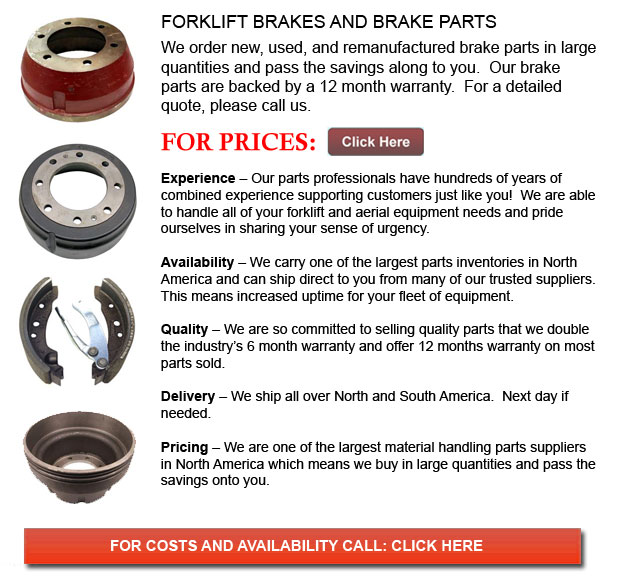
Forklift Brake - A brake drum is where the friction is provided by the brake pads or brake shoes. The shoes or pads press up against the rotating brake drum. There are a few various brake drums types together with certain specific differences. A "break drum" will generally refer to when either shoes or pads press onto the inner surface of the drum. A "clasp brake" is the term used in order to describe whenever shoes press next to the exterior of the drum. Another type of brake, referred to as a "band brake" utilizes a flexible belt or band to wrap all-around the outside of the drum. If the drum is pinched in between two shoes, it can be known as a "pinch brake drum." Like a conventional disc brake, these types of brakes are somewhat uncommon.
Prior to 1955, old brake drums required consistent modification regularly in order to compensate for drum and shoe wear. Long brake pedal or "Low pedal" travel is the dangerous end result if modifications are not executed satisfactorily. The motor vehicle could become dangerous and the brakes could become ineffective whenever low pedal is mixed along with brake fade.
There are different Self Adjusting Brake Systems accessible, and they can be categorized within two main kinds, RAI and RAD. RAI systems have inbuilt devices that avoid the systems to be able to recover whenever the brake is overheating. The most popular RAI makers are AP, Bendix, Lucas, and Bosch. The most well-known RAD systems comprise Ford recovery systems, Volkswagen, VAG, AP and Bendix.
Self-repositioning brakes normally use a tool that engages only when the vehicle is being stopped from reverse motion. This stopping technique is satisfactory for use where all wheels make use of brake drums. The majority of vehicles these days use disc brakes on the front wheels. By working only in reverse it is less probable that the brakes will be applied while hot and the brake drums are expanded. If adapted while hot, "dragging brakes" could occur, which increases fuel consumption and accelerates wear. A ratchet tool that becomes engaged as the hand brake is set is another way the self adjusting brakes may work. This means is just suitable in applications where rear brake drums are used. When the emergency or parking brake actuator lever goes over a specific amount of travel, the ratchet advances an adjuster screw and the brake shoes move toward the drum.
Situated at the bottom of the drum sits the manual adjustment knob. It could be adjusted utilizing the hole on the other side of the wheel. You will have to go under the vehicle along with a flathead screwdriver. It is very significant to be able to adjust each and every wheel equally and to be able to move the click wheel properly as an unequal adjustment could pull the vehicle one side during heavy braking. The most efficient method in order to make certain this tiresome task is accomplished safely is to either raise every wheel off the ground and hand spin it while measuring how much force it takes and feeling if the shoes are dragging, or give each one the exact amount of clicks utilizing the hand and then do a road test.
![]() Click to Download the pdf
Click to Download the pdf
Forklift Parts
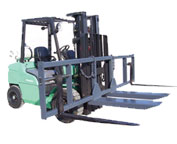
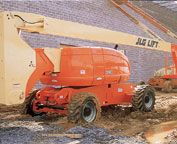
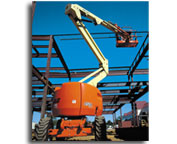

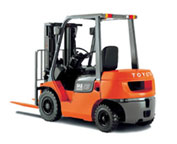
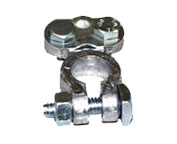
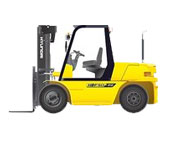
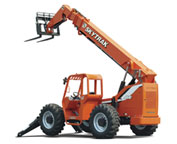
Lift Parts Express
TOLL FREE: 1-888-695-7994
LOCAL: 310-598-2341
6475 E. Pacific Coast Hwy
Long Beach, California
forkliftpartslongbeach.com
Email Us
About Us


